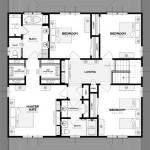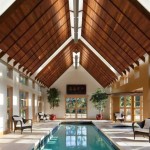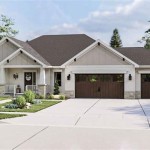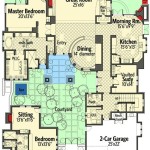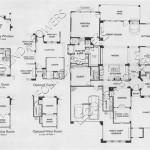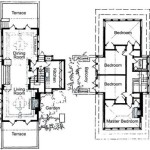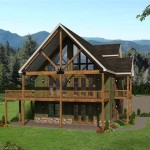```html
New England Style Home Plans: A Design Legacy
New England style home plans represent a distinct architectural approach characterized by simplicity, functionality, and resilience. Stemming from the colonial era, these designs have evolved while retaining core elements that reflect the region's climate, history, and aesthetic preferences. Understanding the nuances of New England style involves exploring its historical context, identifying key architectural features, and considering its enduring relevance in contemporary home design.
The origins of New England architecture are directly linked to the early settlers of the region. Drawing inspiration from their native England, these builders adapted traditional designs to the available materials and the challenging North American environment. Early homes prioritized practicality and durability, often featuring simple rectangular shapes, minimal ornamentation, and efficient floor plans. Over time, the style diversified, incorporating elements from other architectural movements while retaining its fundamental character.
Key Architectural Features of New England Style Homes
Several distinctive features define New England style homes. These elements contribute to the overall aesthetic and functional appeal of these houses, making them instantly recognizable and highly sought after.
One of the most prominent characteristics is the use of clapboard siding. Clapboard, typically made of wood, consists of overlapping horizontal boards that provide weather protection and a clean, classic look. While originally painted white or other light colors to reflect sunlight and protect the wood, modern interpretations may incorporate a wider range of colors, from muted grays and blues to bolder, more contemporary shades.
Another defining feature is the prevalence of symmetrical facades. New England style homes often exhibit a balanced and orderly appearance, with windows and doors arranged in a symmetrical pattern around a central entrance. This symmetry contributes to the home's sense of proportion and visual harmony. The front door is often emphasized with a decorative surround, such as pilasters, pediments, or a simple portico, adding a touch of elegance to the otherwise understated design.
Double-hung windows are another common element found in New England style homes. These windows, which consist of two sashes that slide vertically, provide excellent ventilation and are well-suited to the region's climate. They often feature multiple panes of glass, adding to the traditional charm of the design. Shutters, typically functional rather than purely decorative, are frequently installed on either side of the windows to provide additional protection from the elements.
Steeply pitched roofs are essential for shedding snow and ice, a necessity in the New England climate. The steep pitch allows snow to slide off easily, preventing it from accumulating and potentially damaging the roof structure. Dormers, which are projecting structures containing windows, are often incorporated into the roof to provide additional light and ventilation to the attic space. These dormers can also add visual interest to the roofline.
Interior features often reflect the same emphasis on simplicity and functionality. Hardwood floors are common, providing durability and a warm, inviting atmosphere. Fireplaces, originally essential for heating the home, remain a prominent feature, often serving as a focal point in living rooms and other gathering spaces. Built-in cabinetry and shelving are also frequently incorporated, providing ample storage and contributing to the home's overall sense of order and organization.
Variations Within the New England Style
While the term "New England style" suggests a monolithic design, there are actually several distinct variations within this architectural tradition. These variations reflect the evolving tastes and influences of different eras and communities within the region.
The Cape Cod style is perhaps the most iconic variation. Characterized by its simple rectangular shape, low roofline, and central chimney, the Cape Cod house is known for its practicality and affordability. Originally built with minimal ornamentation, Cape Cod homes often feature a single story, although later variations may include a second story or dormers to increase living space. The Cape Cod style remains popular today due to its timeless appeal and adaptability to modern lifestyles.
The Colonial style, which emerged later in the colonial period, is characterized by its more formal and elaborate design. Colonial homes typically feature a symmetrical facade, with a central entrance flanked by evenly spaced windows. The roofline is often steeper than that of a Cape Cod, and the overall design is more ornate, with decorative moldings, columns, and other architectural details. The Colonial style reflects the growing prosperity and sophistication of the region during the 18th century.
The Saltbox style is another distinctive variation, characterized by its long, sloping roofline that extends down to the rear of the house. This design feature, which was often added to existing homes to provide additional living space, gives the Saltbox its distinctive asymmetrical appearance. The Saltbox is a practical and visually interesting adaptation of the basic New England home design.
The Federal style, which emerged after the American Revolution, represents a further refinement of the Colonial style. Federal homes typically feature more delicate ornamentation, such as elliptical windows, fanlights, and intricate moldings. The overall design is more elegant and sophisticated than that of earlier Colonial homes, reflecting the growing confidence and refinement of the newly independent nation.
Adapting New England Style for Modern Living
While rooted in history, New England style home plans remain relevant and adaptable for contemporary living. Architects and designers are increasingly incorporating elements of this traditional style into new construction and renovations, creating homes that blend classic charm with modern convenience.
One approach is to retain the traditional exterior features, such as clapboard siding, symmetrical facades, and double-hung windows, while updating the interior layout and amenities. This allows homeowners to enjoy the aesthetic appeal of a New England style home while benefiting from modern open floor plans, energy-efficient appliances, and other contemporary features.
Another approach is to incorporate New England style elements into a more contemporary design. For example, a modern home might feature a clapboard exterior and a steeply pitched roof, but with a more minimalist design and larger windows. This creates a unique blend of traditional and modern aesthetics, resulting in a home that is both timeless and contemporary.
Sustainability is also an increasingly important consideration in modern New England style home design. Architects are exploring ways to incorporate energy-efficient materials and technologies, such as solar panels, high-performance windows, and geothermal heating and cooling systems, while maintaining the traditional aesthetic of the home. This allows homeowners to reduce their environmental impact while enjoying the comfort and beauty of a New England style home.
The appeal of New England style home plans lies in their enduring combination of simplicity, functionality, and aesthetic charm. This architectural tradition continues to evolve, adapting to the changing needs and preferences of homeowners while retaining its core values and distinctive character. The result is a timeless and versatile design that remains highly sought after by those seeking a connection to history and a comfortable, inviting place to call home.
```
50 Top New England House Plans And Northeast Style Designs

50 Top New England House Plans And Northeast Style Designs

Plans Two Story Modular Homes Colonial House New England Home

50 Top New England House Plans And Northeast Style Designs

Plan 042h 0021 The House

Elbring New England Style Home Homes Colonial House Plans Cape Cod

The Stonewood Lane 7777 4 Bedrooms And 3 5 Baths House Designers

3 Bedroom 1 168 Sqft Cottage Style House Plan 1151

New England Style House Plans Coastal From Home

Craftsman Floor Plan 4 Bedrms 3 5 Baths 4100 Sq Ft 115 1465

